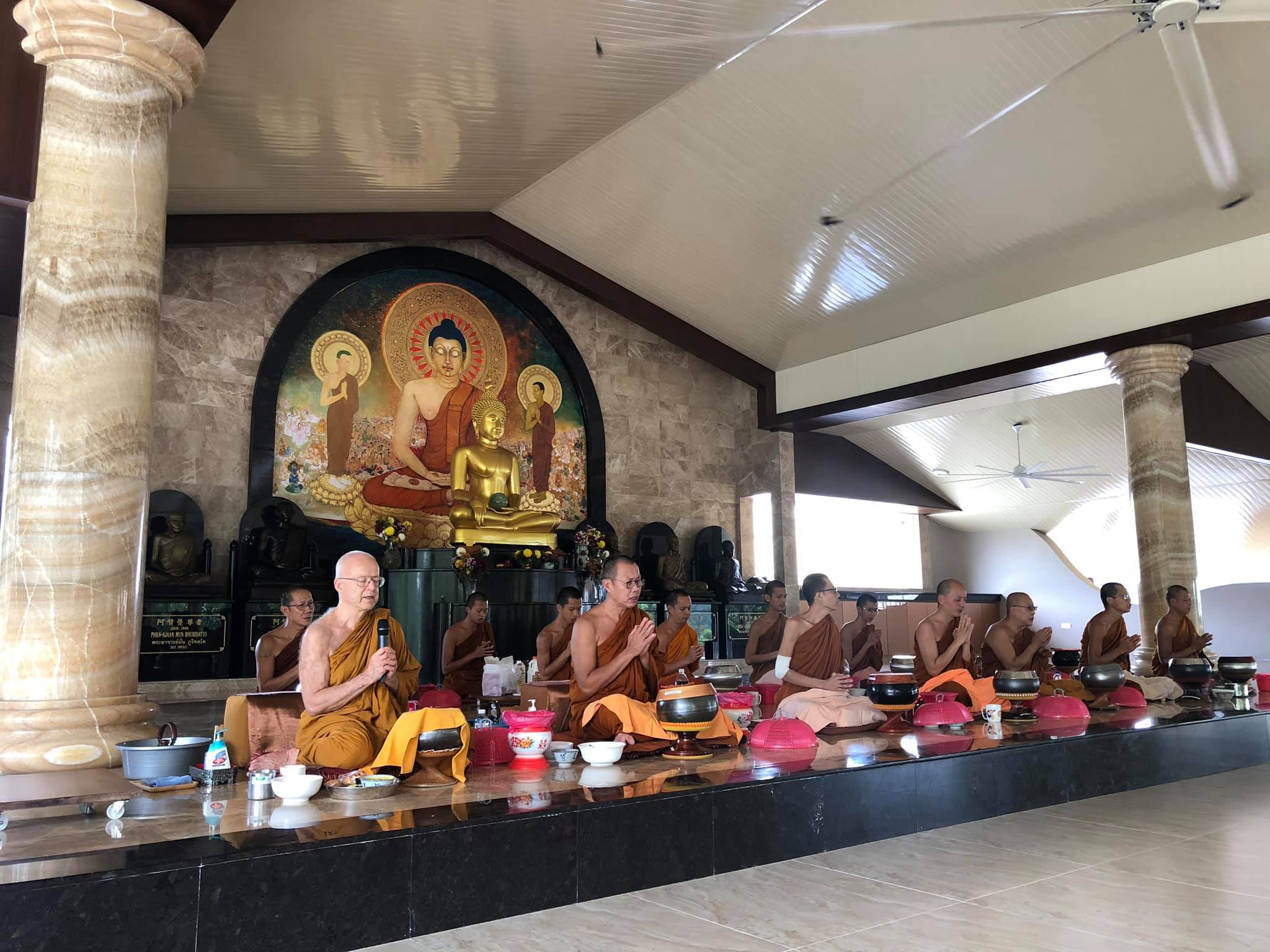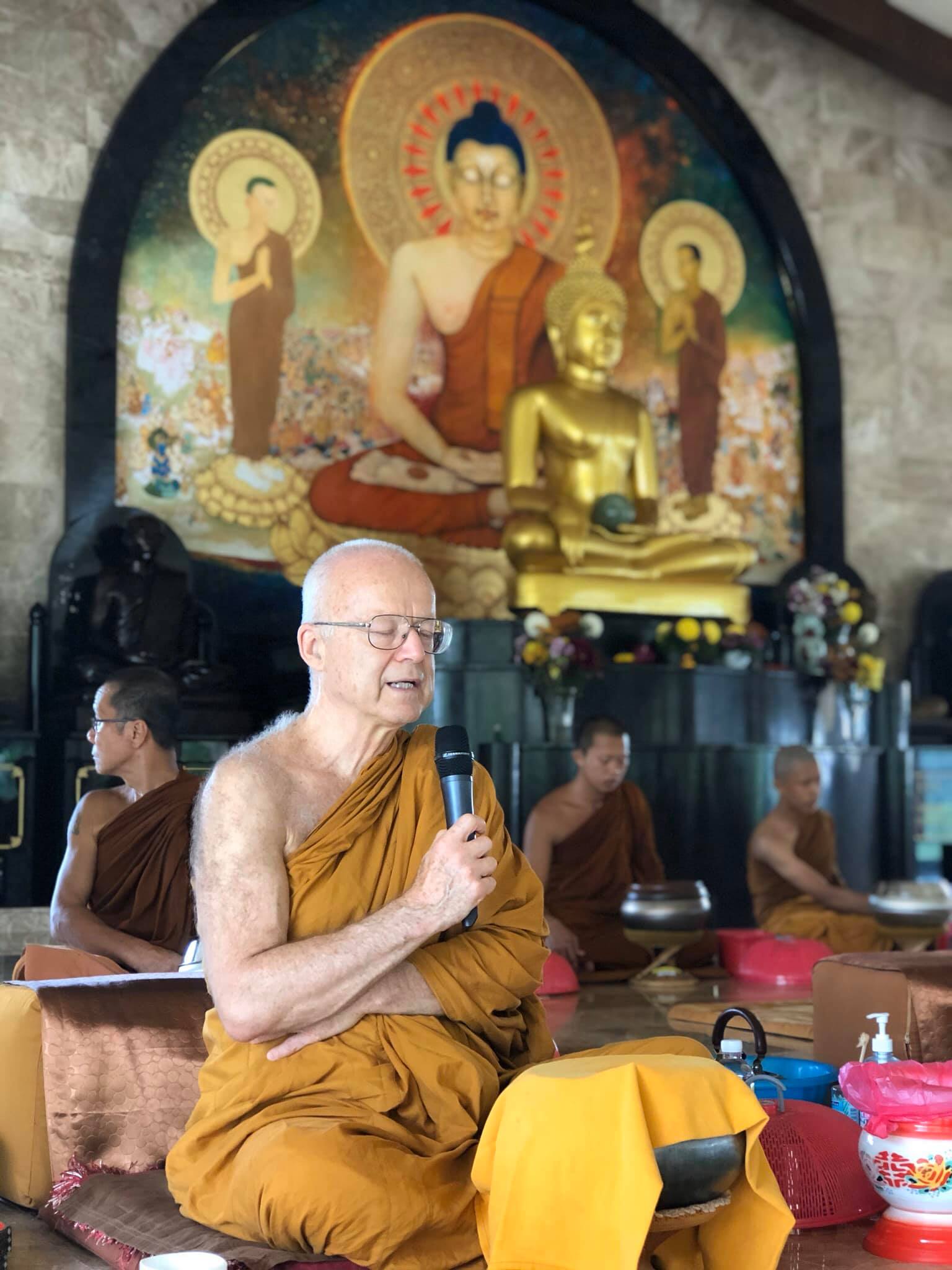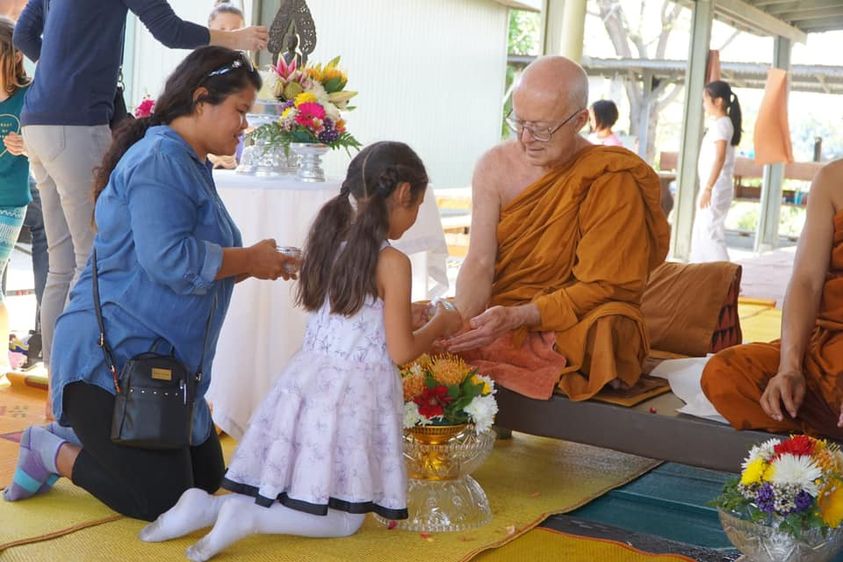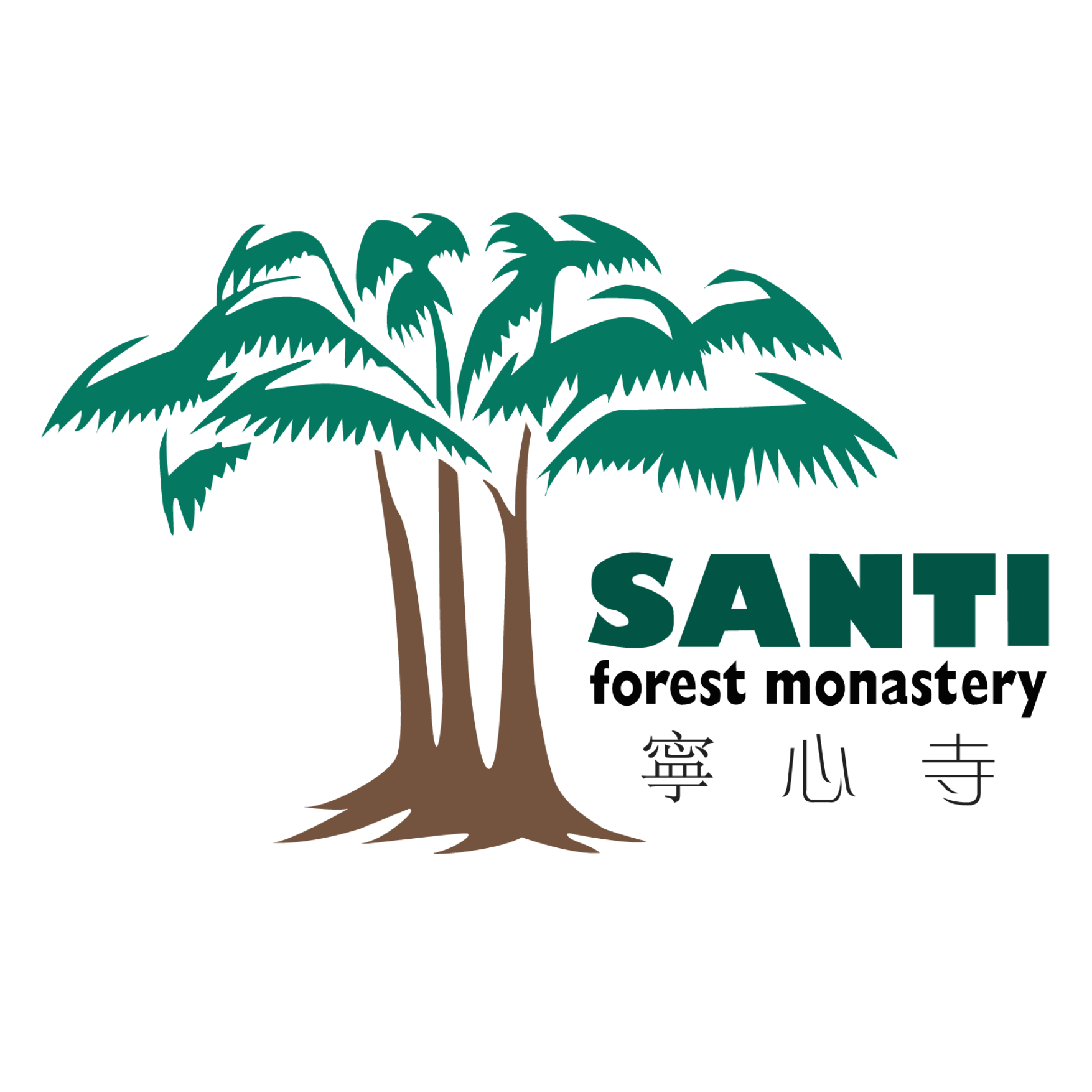
Phra Ajaan Thānissaro
(1949 – Present)
Phra Ajaan Ṭhānissaro is Phra Ajaan Keng’s primary teacher. He was born on 28 December 1949, and grew up in rural New York and Virginia, in the United States of America.
During high school, he went to the Philippines under the auspices of the American Field Service (AFS). On the plane going back home, he met two American students who had been to Thailand and been ordained as novices (sāmaṇeras). During their conversations, they explained to him the Buddha’s most fundamental teaching, the Four Noble Truths, and he found that it made a lot of sense to him. The following year, he met his girlfriend who was the daughter of a military man who had been stationed in Thailand. She had lots of stories to tell about Thailand as well, so he was intrigued.
During his sophomore year at Oberlin College, Donald Swearer, a professor of religion, brought in a monk from Japan and a monk from Thailand to teach meditation. He signed up immediately and felt that “This is a really cool skill. You sit down and breathe, and you come up an hour later a much better person.’ That’s what I liked about meditation from the beginning: learning how to bring your mind under control and find happiness inside.”
Phra Ajaan Ṭhānissaro graduated from Oberlin College in 1971 and was a Shansi Rep in Chiengmai, Thailand, for two years, 1972–74. There he taught English at Chiengmai University. Towards the end of his tenure there, in 1974, he ordained as a Buddhist monk and fi rst met his primary teacher, Than Phor Fuang Jotiko (a close student of Than Phor Lee Dhammadharo) at Wat Dhammasathit, Rayong, Thailand. He planned to extend his time in Thailand, but caught malaria and had to disrobe to return to the USA.
He thought of getting his graduate degree in religion and teaching Buddhism at the university level, so he went to an American Academy of Religion conference in Chicago, where the three big names in Thai Buddhist studies — Donald Swearer, Frank Reynolds, and Stanley Tambiah — were giving presentations. Only about ten people showed up, though, and there was no dialogue going on at all. He thought, “I can’t do this with my life,” and kept thinking about Than Phor Fuang on his hillside, with not much to his name — yet perfectly happy. He eventually decided to return to Thailand in 1976 to have the full-time opportunity to meditate. Than Phor Fuang took him back as a student on one condition: That he make a vow that he would be willing to die in Thailand if he didn’t succeed in his meditation. Phra Ajaan Ṭhānissaro took the vow. He was ordained on 7 November 1976 at Wat Asokaram, with Phra Rajavaraguṇa (Samrong Guṇavuḍḍho) as his Preceptor, and Phra Khru Suvaṇṇadhammajoti (Ajaan Thong Candasiri) as his Announcing Teacher.
Within a few years, he became Than Phor Fuang’s attendant monk. Before passing away in 1986, Than Phor Fuang made it known that he wanted Phra Ajaan Ṭhānissaro to take over Wat Dhammasathit as its abbot. However, there was no precedent for a Westerner taking over a Thai monastery that had been founded by and for Thai monks, so the position of abbot remained vacant for five years.
By the time he was offered the position of abbot, there were so many strings attached that it would have been all responsibility and no authority. It was then that Phra Ajaan Suwat Suvaco sought him out and asked him to help translate at a retreat he was to teach in Massachusetts in May of 1990. It was on this retreat that an American student off ered to donate land for Phra Ajaan Suwat to build a forest monastery. Phra Ajaan Suwat refused to accept the off er unless Phra Ajaan Ṭhānissaro returned to the USA to help with the project. So Phra Ajaan Ṭhānissaro agreed to help. In 1991 (2534), he moved to Wat Metta, and in 1993 (2536) Phra Ajaan Suwat requested that he assume the position of the abbot of the new monastery. Phra Ajaan Ṭhānissaro has been resident there ever since. However, he teaches extensively in the USA, Canada, France, and Brazil, and returns to Southeast Asia every few years.
Phra Ajaan has contributed signifi cantly to the growth of Buddhism and the teachings of the Thai Forest Meditation Tradition by translating many of the teachings of the Kruubaa Ajaans and the Pali Canon, and by giving meditation and Dhamma teachings. Some of his major works are The Buddhist Monastic Code, volumes 1 & 2, The Mind Like Fire Unbound, The Wings to Awakening, Skill in Questions, Buddhist Romanticism, On the Path, and Right Mindfulness. His works and teachings are off ered freely in print and in softcopy via the internet (Dhammatalks.org and accesstoinsight.org). There is also a growing collection of his talks on Youtube.
Before passing away, Than Phor Lee told Than Phor Fuang to be responsible for his books after he was gone. Than Phor Fuang was not sure of what Than Phor Lee meant, as he felt that he did not have the educational standing to be responsible for Than Phor Lee’s books. However, judging by the huge volume of works by Phra Ajaan Ṭhānissaro, we can certainly surmise that Than Phor Lee foresaw that Than Phor Fuang was going to be responsible for training the person who would continue his legacy of putting the Dhamma in writing and expanding it further to English speaking readers of the world.
In recognition of his extensive work in translating (from both Pali & Thai languages), compiling, and teaching the Dhamma to a global following, Phra Ajaan received an honorary degree of Doctor of Philosophy (PhD – Buddhist Studies) by the Mahamakut Buddhist University, Thailand, in 2005. In the same year, the King of Thailand also gave him the ecclesiastical title of Chao Khun, with the name Phra Bhāvanāvidhānaparijā.
Phra Ajaan Ṭhānissaro has been a driving force for the growth and understanding of the teachings and practice of the Kammaṭṭhāna tradition in Singapore and Malaysia, by his coming to teach in Wat Palelai. He also inspired and facilitated the ordination of Phra Ajaan Keng Khemako. Moreover, he has been guiding the monastics and lay people in the way in which Buddhism and the Kammaṭṭhāna practices are to be introduced and conducted in Wat Palelai and Wat Santi. In the early years of the founding of Wat Santi, for example, he helped to ordain new monks, undertaking the role of the Preceptor during the ordinations.
Phra Ajaan Ṭhānissaro has a strong and growing group of students and supporters in the USA, where he has been advocating strict adherence to the study and practice of the Dhamma & Vinaya, as taught in the Pali Canon. This is no simple task, as all the major and minor schools of Buddhism are present in the USA. While that may seem like a good thing, there are also the challenges of having to ensure that people do not misinterpret the Dhamma in accordance with their whims and fancies, in the name of wanting to re-make Buddhism to be more in tune with the times, or with Western culture and beliefs.
Since his return to the USA, Phra Ajaan Ṭhānissaro has also been an exemplar of how the mentorship model of the monastic life is to be lived, albeit in an environment foreign to its original context. A growing number of men who desire to live the life of a monk have come to study with him, and as of September 2017, there are thirteen monks under his tutelage in Wat Metta. Phra Ajaan Ṭhānissaro has been tutoring some of them in the Thai and Pali languages and this will, hopefully, ensure that the Dhamma as taught by the Forest Meditation Masters will continue to live on and expand even further in the West.





